
views
Preparing to Travel With Your Cat
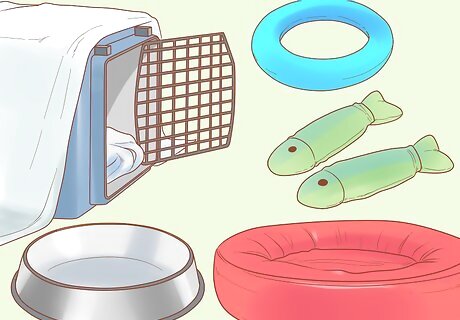
Gather supplies in your car. When traveling with your cat, you will need to bring along a variety of supplies. These supplies include items that you will use in the car and items you will use when you take breaks and when you get to your destination. Supplies you will need include: Pet carrier/kennel Cat bed or blanket Cat food and bowl Water and bowl Leash Cat toys Litter box and litter Medications
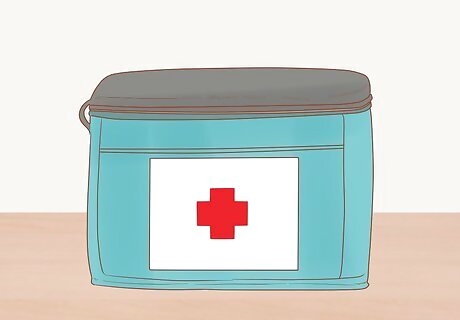
Pack a first aid kit in your car. Stock it with bandages, gauze and antiseptic cream in the kit. Write down your vet's phone number, the number of a 24-hour animal hospital near your destination, and the phone number of a poison control hotline so you can call in case of emergency. You can also program these numbers directly into your cell phone. If you're concerned that your cat might get anxious or carsick, speak to your vet ahead of the trip. It's best to try out any medications at home before you leave, in case your cat has a bad reaction.
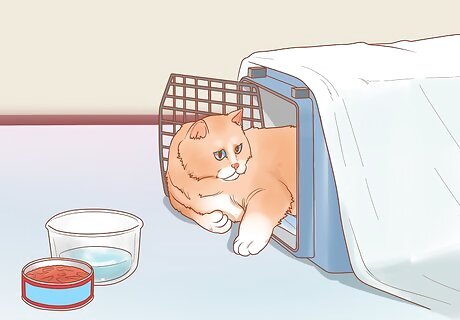
Get your cat used to its kennel. In order to make traveling in a kennel more comfortable, you should let your cat get used to it before hand. Place it in your home, with the door open, and let your cat explore it for a few days before you are planning to travel by car. As your cat becomes more comfortable with its kennel, begin closing the door for a minute or two to get it used to the closed door. Consider putting a blanket or cat bed in the kennel that already has your cat's scent on it. This will make the cat more comfortable with the space.
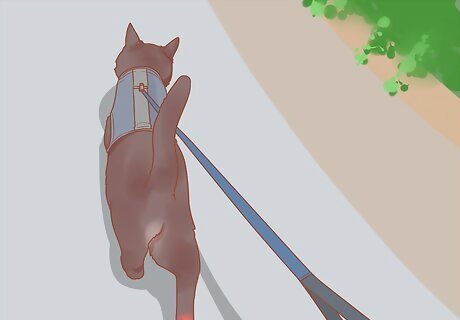
Practice using a leash before your trip. Use a leash on your cat at home before taking a trip. Try to walk your cat around your home for a while and then take it outside on the leash once it starts to get used to it. This practice will make it so the leash does not come as a total surprise to the cat when you are traveling. You may just want to attach the leash to your cat's collar. However, you can get it a body harness if it fights the leash too much when it is attached to its collar.
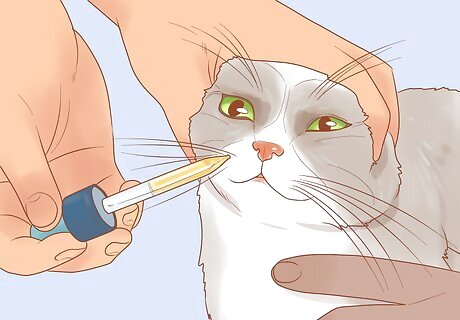
Medicate your cat before leaving, if necessary. If your cat is not good in the car, for instance it drools, paces, meows uncontrollably, or gets upset, then you may need to medicate it to keep it calm. Some of these behaviors are caused by anxiety and some are caused by ailments, such as motion sickness. Consult with your veterinarian about prescription or over-the-counter medications that might help your cat during your travels. Follow the directions on the medication packaging for dosage and timing of dosing. In most cases, you will want to begin the medication before the trip begins so that the cat is calm from the beginning.
Caring For Your Cat While Driving
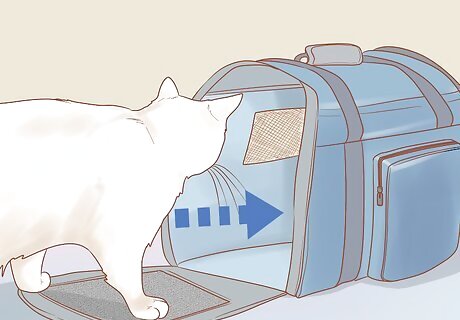
Put your cat in it's kennel. Confine your cat to a kennel or a pet carrying case so the cat doesn't get in your way while you're driving. It can be dangerous if a loose cat climbs into the driver's lap, gets underfoot, or becomes frightened or excited. Make sure the kennel is large enough for your cat to turn around in, stand up fully, and stretch out. Place something soft in the kennel for the cat to lie on before putting the cat inside. Keep the inside of your car at a comfortable temperature, not too hot and not too cold.
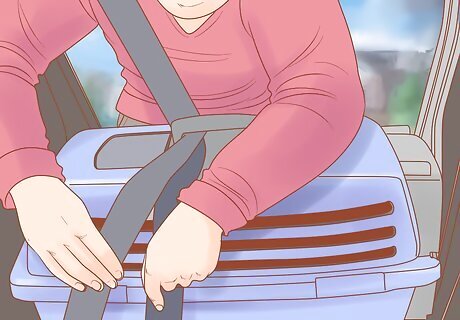
Secure the kennel in the car. Once you put your cat in the kennel, secure it with one of the seat belts or by placing it in a spot where it cannot move. This will help to protect your cat from injury if you have to stop suddenly or you get into an accident.
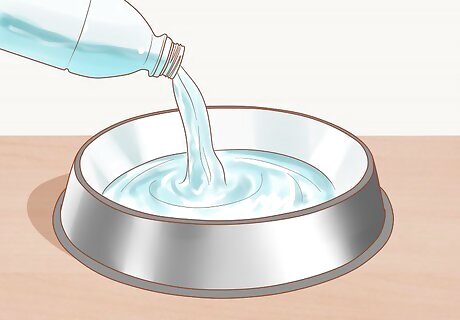
Give your cat water regularly. Fill your cat's water bowl at rest stops and offer it a chance to drink. Cats can become dehydrated easily, especially if they eat dry food, so it's important to give your cat frequent access to water. It is typically not a good idea to give your cat water while the car is moving. It will likely spill and get all over the place.
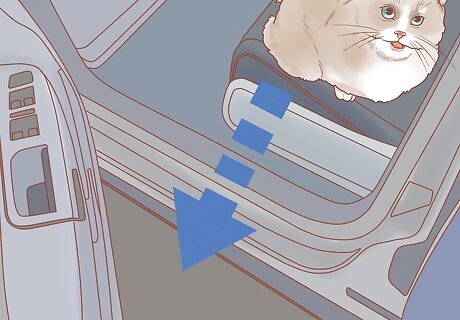
Let your cat out of the car every two hours or so. You and your cat should stretch your legs every couple hours during a trip in the car. If at all possible, let the cat investigate an area with loose dirt or sand to encourage it to defecate or urinate. If there are no sandy spots available, or your cat is particular about litter, set up a small litter box and try to have your cat use it while you are stopped. Taking a few minutes to let your cat relax and go to the bathroom is better than having your cat have an accident in the car.
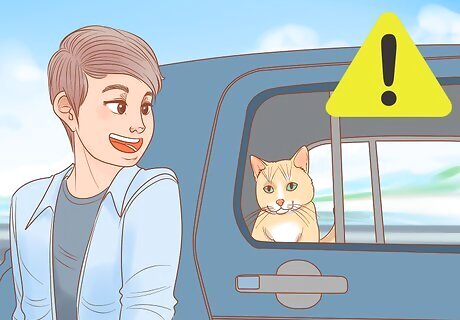
Don't leave your cat alone in the car. It is dangerous to leave a pet in a car unattended. The temperature can increase rapidly in a closed up car, so you can endanger your cat's health by leaving it alone for a few minutes if it's too hot out. Never leave your cat in a car if the temperature is too hot. If the temperature is warm and you can't avoid leaving your cat briefly, park in the shade and leave the windows open enough to allow air circulation, but not so wide your cat can escape or get its head caught. A cat can get sick and die quickly if left in an overheated car.

Offer food on the cat's regular schedule. To prevent car-sickness, try to arrange your cat's main meal after you arrive at your destination. However, you should try to feed it at a time that is close to when it normally eats. Cats' bowels are stimulated by food, so be sure to set up the litter box as soon as you arrive at your nightly destination.
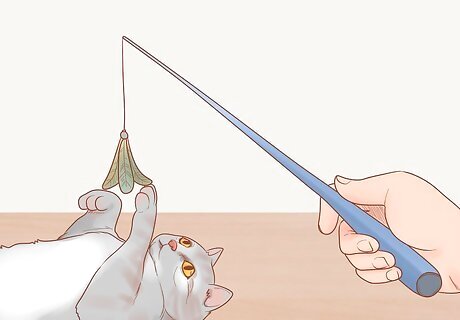
Let your cat blow off some steam at the end of the day. Take cat toys or a laser pointer on your trip to stimulate the cat with play at the end of the day's travel. It's important for your cat to move around and get vigorous exercise, especially if the feline is confined in a kennel for most of the day. This is especially important if you are going on a multi-day trip with your cat.


















Comments
0 comment